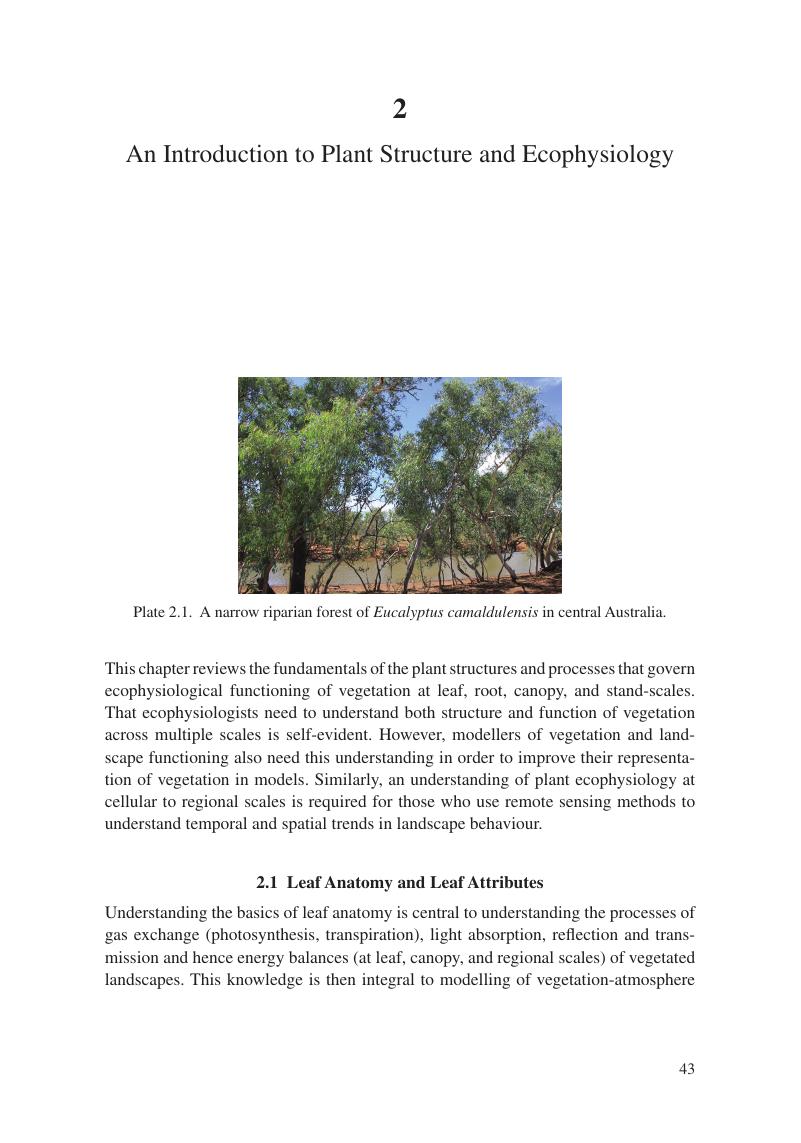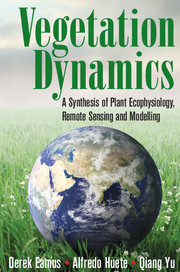Book contents
- Frontmatter
- Contents
- Preface
- Section One Plant Ecophysiology
- 1 An Introduction to Biogeography: Broad-Scale Relationships Amongst Climate, Vegetation Distribution and Vegetation Attributes
- 2 An Introduction to Plant Structure and Ecophysiology
- 3 Water Relations, Hydraulic Architecture and Transpiration by Plants
- Section Two Remote Sensing
- Section Three Modelling
- Section Four Case Studies
- Index
- References
2 - An Introduction to Plant Structure and Ecophysiology
from Section One - Plant Ecophysiology
Published online by Cambridge University Press: 05 June 2016
- Frontmatter
- Contents
- Preface
- Section One Plant Ecophysiology
- 1 An Introduction to Biogeography: Broad-Scale Relationships Amongst Climate, Vegetation Distribution and Vegetation Attributes
- 2 An Introduction to Plant Structure and Ecophysiology
- 3 Water Relations, Hydraulic Architecture and Transpiration by Plants
- Section Two Remote Sensing
- Section Three Modelling
- Section Four Case Studies
- Index
- References
Summary

- Type
- Chapter
- Information
- Vegetation DynamicsA Synthesis of Plant Ecophysiology, Remote Sensing and Modelling, pp. 43 - 109Publisher: Cambridge University PressPrint publication year: 2016



